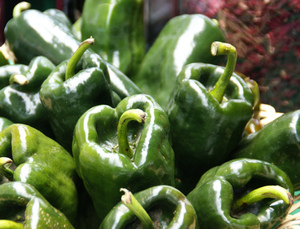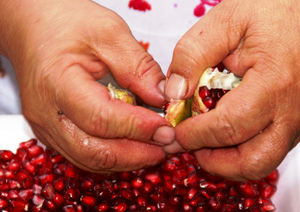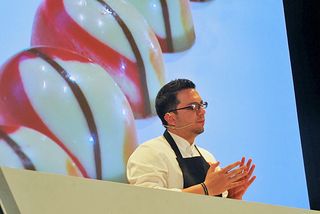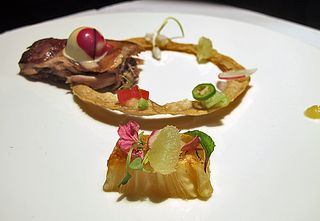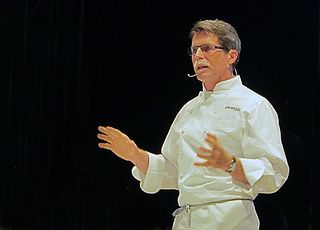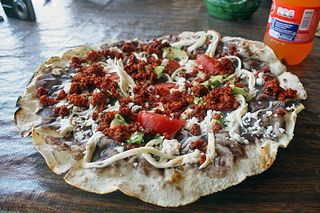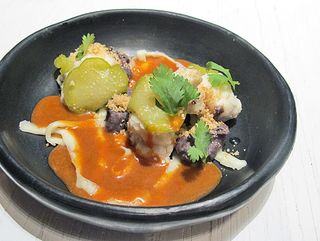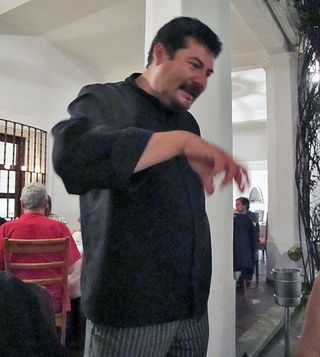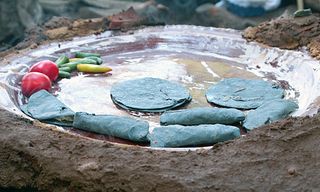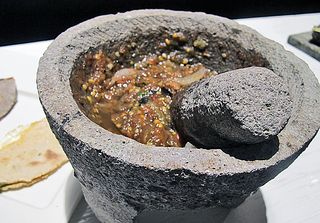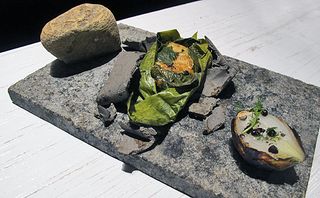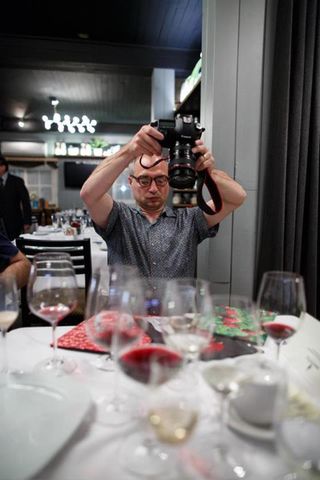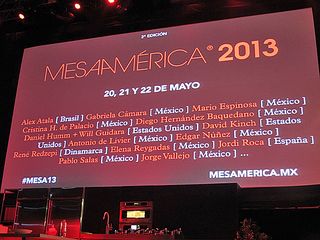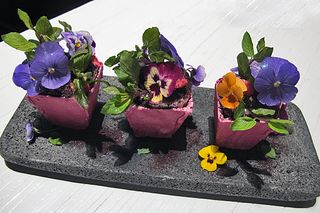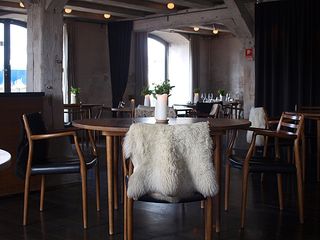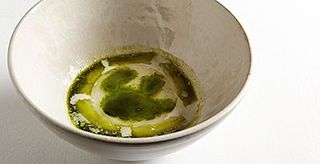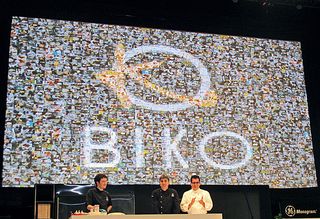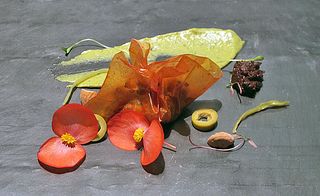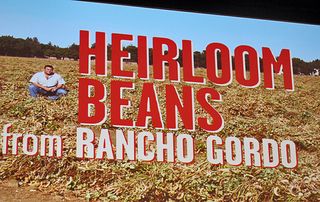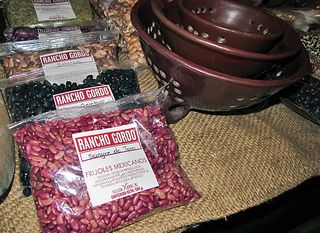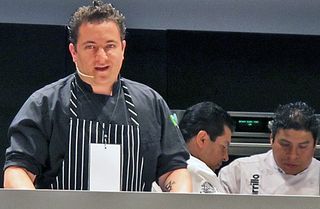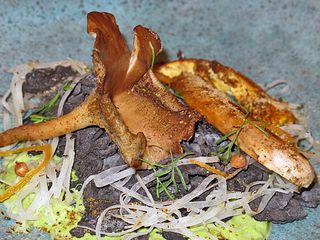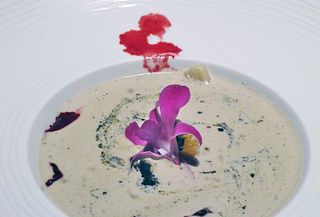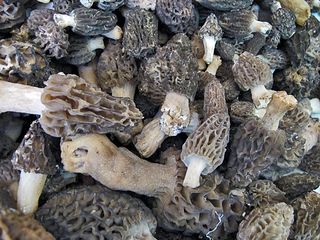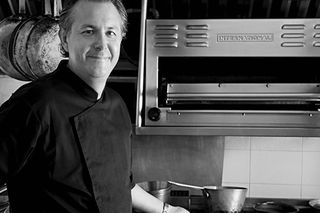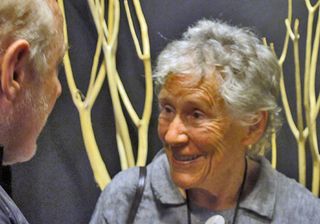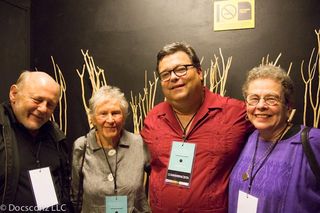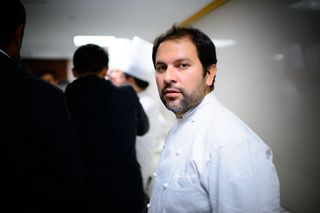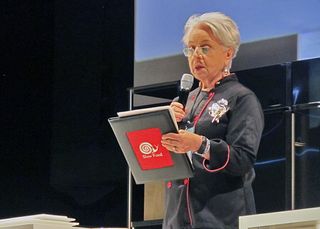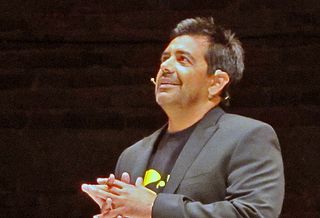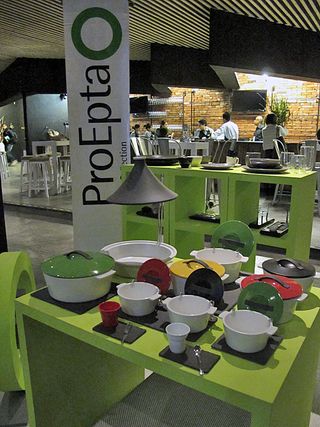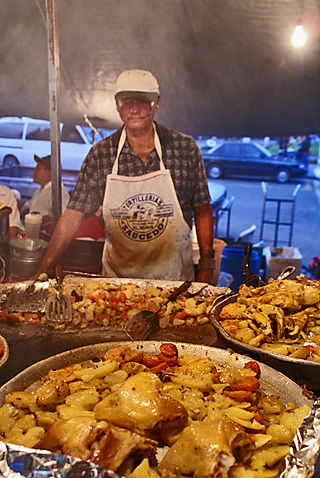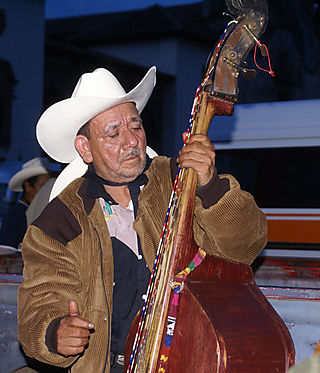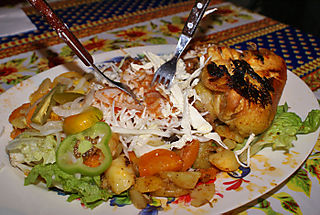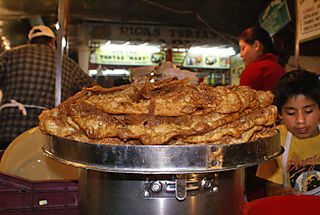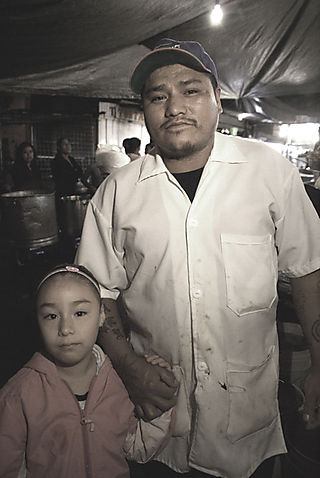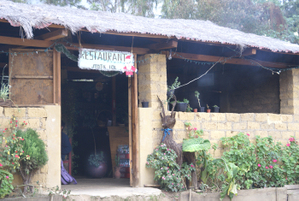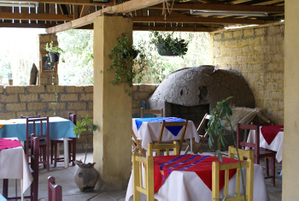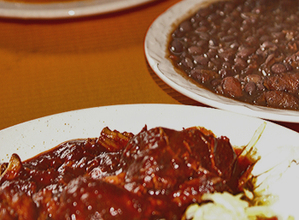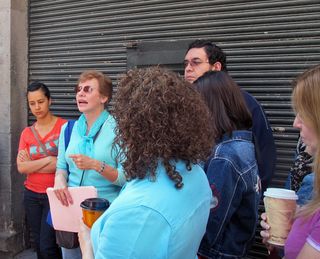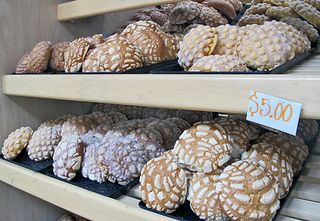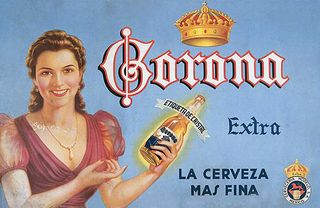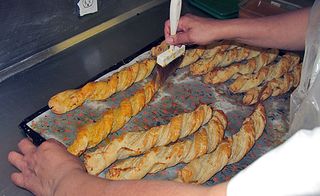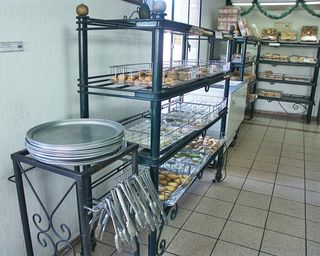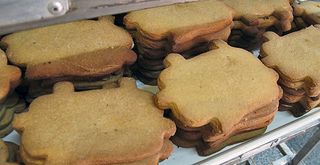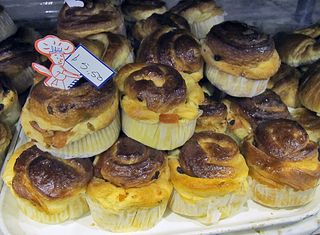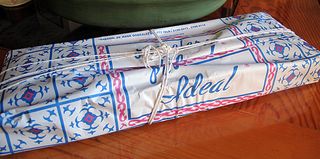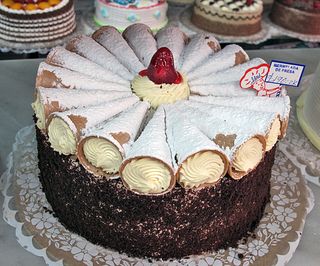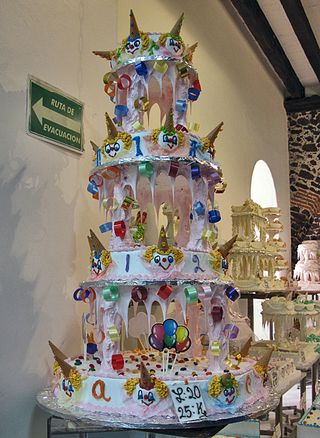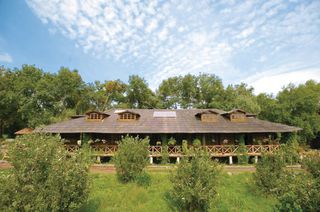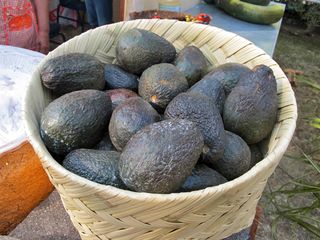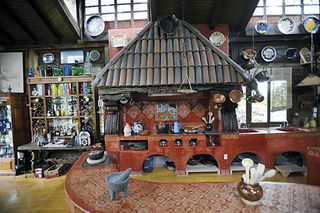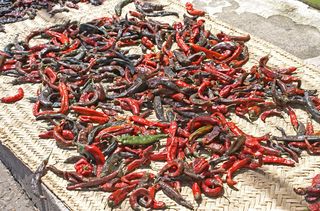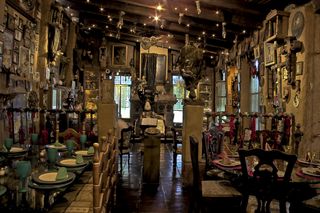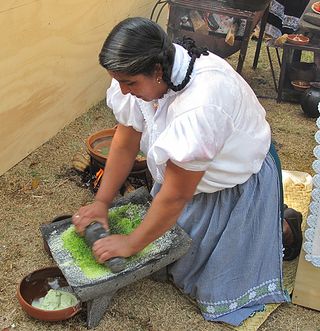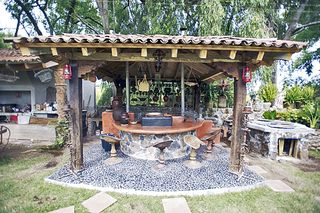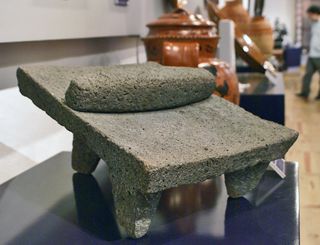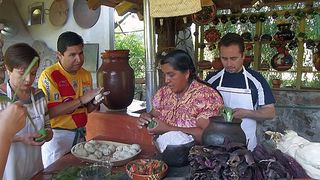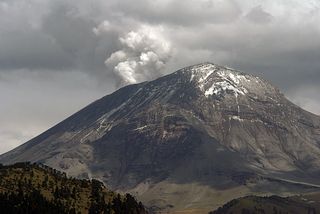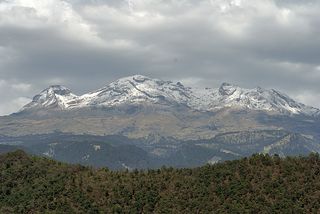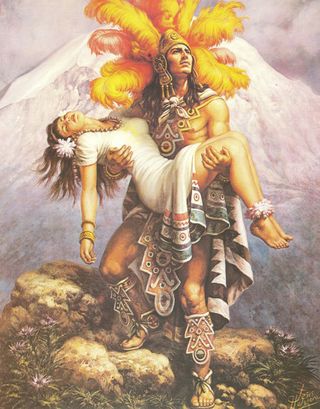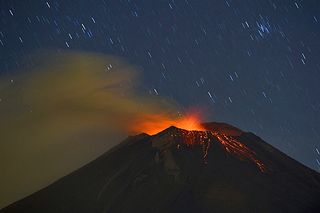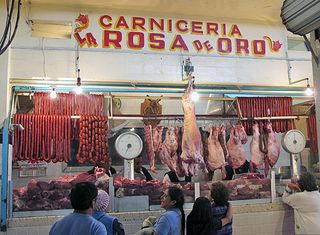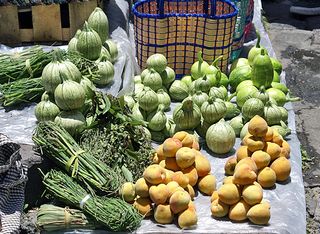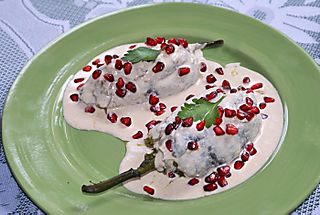
Chiles en nogada (stuffed chiles poblanos in walnut sauce), Pátzcuaro, Michoacán. Photo by Mexico Cooks!.
For the entire month of September, Mexico celebrates its independence with parades, parties, and traditional food and drink in restaurants and at home. One of the most festive recipes connected with Mexico's Independence Day holiday is for chiles en nogada, a magnificent tribute to the seasonal availability of granadas (pomegranates) and nuez de Castilla (freshly harvested walnuts). From mid-July until early October, fresh pomegranates and newly harvested walnuts make chiles en nogada possible. Spicy chiles poblano, stuffed with a fruity picadillo and topped with richly creamy walnut sauce and pomegranate seeds, flaunt the brilliant green, white and red of the Mexican flag.
This festive dish is traditionally served on September 15 or 16 in honor of Mexico's Independence Day, though it is popular anytime in the late summer and early fall. During August and September in the highlands of Mexico, particularly on the streets bordering open-air markets in Mexico City and Puebla, village women can be seen sitting on blankets painstakingly peeling off the brown skin from each individual walnut. It is important to use the freshest walnuts possible, as they produce such a creamy, rich sauce that it is worth the effort demanded to peel them. Yes, although the recipe is not difficult, it is definitely time-consuming…but you and your guests will jump up and shout "VIVA!" when you have licked the platters clean.
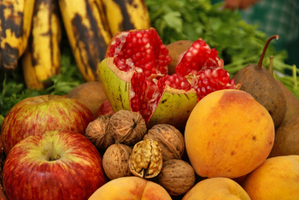
In Mexico, locally grown peaches, pomegranates, and walnuts are in season during the late summer and early fall.
Ingredients
For the Meat
- 2 pounds beef brisket or other stew meat or 1 pound beef and 1 pound pork butt
- 1 small white onion, quartered
- 2 large cloves garlic
- about 1 Tbsp sea salt
For the Picadillo
- 4 Tbsp safflower or canola oil
- 1/3 cup chopped white onion
- 3 large cloves garlic, minced
- 1/2 tsp ground cinnamon
- 1/4 tsp freshly ground black pepper
- 1/8 tsp ground cloves
- 3 heaping Tbsp raisins
- 1 or 2 chiles serrano, finely minced
- 2 Tbsp chopped walnuts or pecans
- 2 Tbsp chopped candied pineapple
- 1 fresh pear, peeled and chopped
- 1 apple, peeled and chopped
- 1 large potato, peeled and diced
- 3 large, ripe tomatoes, roasted, peeled and chopped
- sea salt to taste
For the Chiles
- 6 large, very fresh chiles poblanos , roasted, peeled, and seeded, leaving the stem intact
For the Nogada (Walnut Sauce)
- 1 cup fresh walnuts
- 6 ounces queso doble crema or cream cheese (not fat free) at room temperature
- 1-1/2 cups crema mexicana or 1-1/4 cups sour cream thinned with milk
- about 1/2 tsp sea salt or to taste
- 1 Tbsp sugar
- 1/8 tsp ground cinnamon
- 1/4 cup dry sherry (optional)
For the Garnish
- 1 Tbsp coarsely chopped flat-leaf parsley
- 1/2 cup fresh pomegranate seeds
Procedure
Cut the meat into large chunks, removing any excess fat. Place the meat into a large Dutch oven with the onion, garlic, and salt. Cover with cold water and bring to a boil over medium-high heat. Skim off any foam that collects on the surface. Lower the heat and allow the water to simmer about 45 minutes, until the meat is just tender. Take the pot off the stove and let the meat cool in the broth. Remove the pieces of meat and finely shred them.
Warm the oil in a large, heavy skillet and sauté the onion and garlic over medium heat until they turn a pale gold. Stir in the shredded meat and cook for five minutes. Add the cinnamon, pepper, and cloves, then, stir in the raisins, the two tablespoons of chopped walnuts. Add the chopped pear, apple, and potato, and mix well. Add the tomatoes and salt to taste, and continue cooking over medium-high heat until most of the moisture has evaporated. Stir often so that the mixture doesn't stick. Let cool, cover, and set aside. The picadillo may be made a day or two in advance.
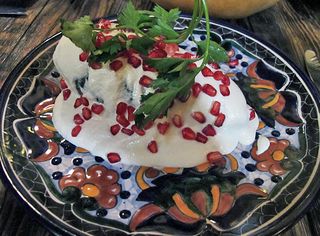
At Mexico City's lovely Restaurante Azul/Histórico, the chiles en nogada are served with either sweet or savory walnut sauce or with both, one sauce at each end of the chile. The waitstaff brings a tray of un-sauced chiles to the table; each diner picks the chile he or she wants to eat. The sauces are ladled on from enormous bowls, the waitstaff sprinkles your chile with pomegranates and tops each one with a large sprig of flat-leaf parsley. Chiles en nogada are on the menu until the end of September.
Make a slit down the side of each chile, just long enough to remove the seeds and veins. Keep the stem end intact. Drain the chiles, cut side down, on paper towels until completely dry. Cover and set aside. The chiles may be prepared a day in advance.
At least three hours in advance, put the walnuts in a small pan of boiling water. Remove from the heat and let them sit for five minutes. Drain the nuts and, when cool, rub off as much of the dark skin as possible. Chop into small pieces. Place the nuts, cream cheese, crema, and salt in a blender and purée thoroughly. Stir in the optional sugar, cinnamon, and sherry until thoroughly combined. Chill for several hours.
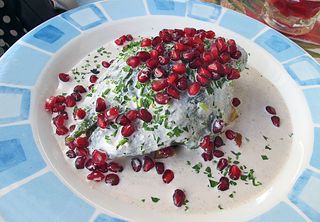
Another beautifully presented, absolutely delicious, and very large serving of chile en nogada, this time at Fonda El Portalito in Colonia la Condesa, Mexico City. For a mere 90 pesos, your menú del día (complete meal of the day) includes a basket of fresh bread, two salsas, choice of two soups, either rice or spaghetti, the chile en nogada, all the agua fresca you want, and a little cup of gelatin dessert. At El Portalito, chiles en nogada are available throughout the month of September.
Preheat the oven to 250ºF. When ready to serve, reheat the meat filling and stuff the chiles until they are plump and just barely closed. Put the filled chiles, covered, to warm slightly in the oven. After they are warmed to room temperature, place the stuffed chiles (cut side down) on a serving platter or on individual plates, cover with the chilled walnut sauce, and sprinkle with the parsley leaves and the pomegranate seeds.
This dish may be served at room temperature, or it may be served chilled. It is rarely if ever served hot.
Photos 2, 3, and 4 courtesy of Jesús Guzmán Moya, M.D., of Puebla, Puebla, México. Enjoy more of Dr. Guzmán's lovely photos here. Gracias, amigo Chucho! And have a look here for more traditional Mexican recipes.
Looking for a tailored-to-your-interests specialized tour in Mexico? Click here: Tours.
